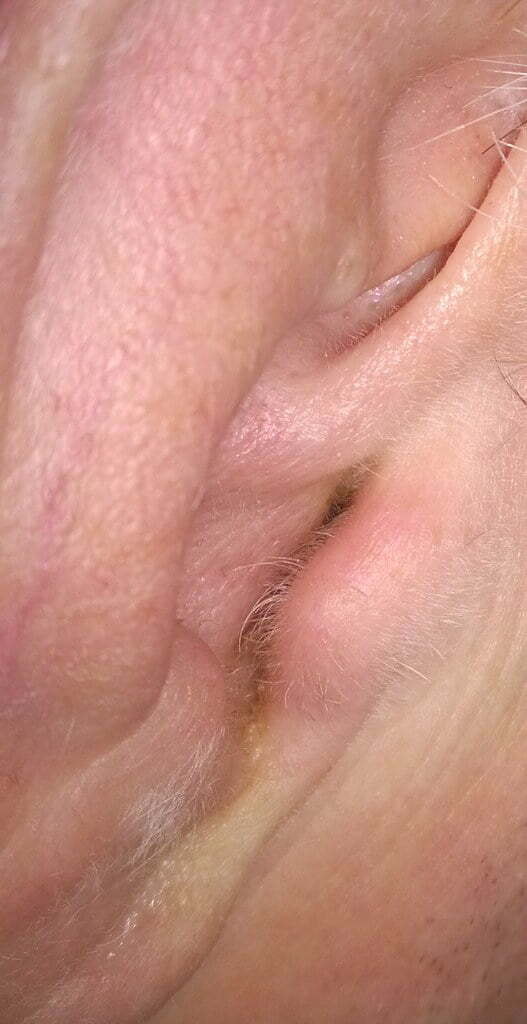Ear Wax and Your Well-Being: Understanding How Ear Wax Supports Overall Health
Last Updated on 25th April 2024 by Admin
Ear wax, medically known as cerumen, is a naturally occurring substance found in the ear canal. While many people consider it a nuisance, ear wax actually plays a crucial role in supporting our overall health. Understanding the functions and benefits of ear wax can help us appreciate its importance and take appropriate care of our ears. In this article, we will delve into the fascinating world of ear wax and explore how it contributes to our well-being.
What is Ear Wax?
Ear wax, or cerumen, is a waxy substance produced by the ceruminous glands in the ear canal. It is primarily made up of dead skin cells, hair, and secretions from these glands. The consistency of ear wax can vary from dry and flaky to wet and sticky, depending on an individual’s genetics and environment.
Functions of Ear Wax
Ear wax serves multiple important functions that contribute to the overall health and well-being of our ears. Let’s take a closer look at these functions:
1. Lubrication and Moisturization
One of the primary functions of ear wax is to lubricate and moisturize the ear canal. It helps prevent the skin in the ear canal from becoming dry, itchy, or prone to infections. The wax forms a protective barrier against external irritants, such as dust, dirt, and bacteria. This lubrication and moisturization also aid in maintaining the flexibility and health of the delicate skin in the ear canal.
2. Trapping Foreign Particles
Ear wax acts as a natural filter, trapping dust, debris, and other foreign particles that may enter the ear canal. This prevents them from reaching the delicate structures of the inner ear, including the eardrum. By trapping these particles, ear wax helps prevent potential damage or blockages. Additionally, the stickiness of the wax helps to capture and hold onto these particles, preventing them from moving deeper into the ear.
3. Antibacterial and Antifungal Properties
Ear wax contains antimicrobial properties that help protect the ear against bacterial and fungal infections. It creates an acidic environment that inhibits the growth of these microorganisms, reducing the risk of infections in the ear canal. The antimicrobial properties of ear wax help to maintain the natural balance of the ear and prevent the overgrowth of harmful bacteria or fungi.
4. Self-Cleaning Mechanism
Believe it or not, ear wax has a self-cleaning mechanism. As new ear wax is produced, older wax gradually moves from the inner ear towards the outer ear. Jaw movements, such as talking and chewing, along with the natural migration of skin cells, assist in this process. Eventually, the old ear wax dries up, flakes off, or gets washed away during activities like showering, maintaining a clean and healthy ear canal. This self-cleaning mechanism helps to remove any accumulated debris or excess wax, preventing blockages and potential hearing issues.
Maintaining Healthy Ear Wax Levels
While ear wax is beneficial, an excessive buildup can lead to discomfort, hearing problems, and even infections. Here are some tips to maintain healthy ear wax levels:
-
Avoid Ear Cleaning Tools: It is important to avoid using cotton swabs, hairpins, or any other sharp objects to clean inside your ears. These tools can push the wax deeper into the ear, increasing the risk of blockage or damage. Instead, let the self-cleaning mechanism naturally remove the excess wax.
-
Practice Gentle Cleaning: If you feel the need to clean your ears, gently wipe the outer part of the ear with a damp cloth. Remember, the ear canal is self-cleaning, so it is unnecessary to insert anything into it. Avoid using cotton swabs or other objects that can push the wax deeper into the ear.
-
Seek Medical Assistance: If you experience symptoms like earache, hearing loss, or a feeling of fullness in the ear, it is advisable to seek medical assistance. A healthcare professional can safely remove excessive ear wax using specialized tools or techniques. They can also provide guidance on proper ear hygiene and preventive measures.
-
Avoid Excessive Moisture: Excessive moisture in the ear can disrupt the natural self-cleaning mechanism and promote the growth of bacteria or fungi. After swimming or showering, dry your ears thoroughly using a soft towel or a hairdryer on a low setting. Tilt your head to each side to allow any trapped water to drain out.
When to Consult a Healthcare Professional
While ear wax is generally harmless, there are situations where seeking medical assistance is necessary. You should consult a healthcare professional if you experience:
- Severe ear pain or discomfort: Persistent or intense pain in the ear may indicate an infection or blockage that requires medical attention.
- Sudden or significant hearing loss: If you notice a sudden decrease in your hearing ability, it is important to have your ears examined by a healthcare professional.
- Persistent ringing or buzzing sound in the ear: This could be a sign of tinnitus, which may require further evaluation and treatment.
- Dizziness or vertigo: If you experience dizziness or a spinning sensation, it could be related to an issue with your inner ear. Medical assessment is necessary to determine the cause and appropriate treatment.
- Bleeding or discharge from the ear: Any unusual bleeding or discharge from the ear should be evaluated by a healthcare professional to rule out any underlying issues.
A healthcare professional can examine your ears, determine the cause of your symptoms, and provide appropriate treatment if needed. They may perform a thorough ear examination, clean out excessive wax, prescribe medication if an infection is present, or refer you to a specialist for further evaluation.
Conclusion
Ear wax is often misunderstood and seen as a bothersome substance. However, understanding its functions and benefits can help us appreciate its role in supporting our overall ear health. From lubrication and trapping foreign particles to its antibacterial properties and self-cleaning mechanism, ear wax plays a vital role in promoting well-being. By adopting proper ear hygiene practices and seeking medical assistance when necessary, we can ensure that our ears remain healthy and free from issues related to ear wax buildup.
FAQ
1. What is ear wax?
Ear wax, also known as cerumen, is a waxy substance produced by the ceruminous glands in the ear canal. It is made up of dead skin cells, hair, and secretions from these glands.
2. What are the functions of ear wax?
Ear wax serves multiple important functions, including lubricating and moisturizing the ear canal, trapping foreign particles, providing antibacterial and antifungal properties, and acting as a self-cleaning mechanism.
3. How can I maintain healthy ear wax levels?
To maintain healthy ear wax levels, it is important to avoid using ear cleaning tools, practice gentle cleaning by wiping the outer part of the ear with a damp cloth, seek medical assistance if experiencing symptoms, and avoid excessive moisture in the ear.
4. When should I consult a healthcare professional regarding ear wax?
You should consult a healthcare professional if you experience severe ear pain or discomfort, sudden or significant hearing loss, persistent ringing or buzzing sound in the ear, dizziness or vertigo, or bleeding or discharge from the ear. A healthcare professional can examine your ears, determine the cause of your symptoms, and provide appropriate treatment if needed.







